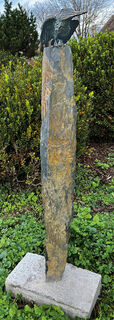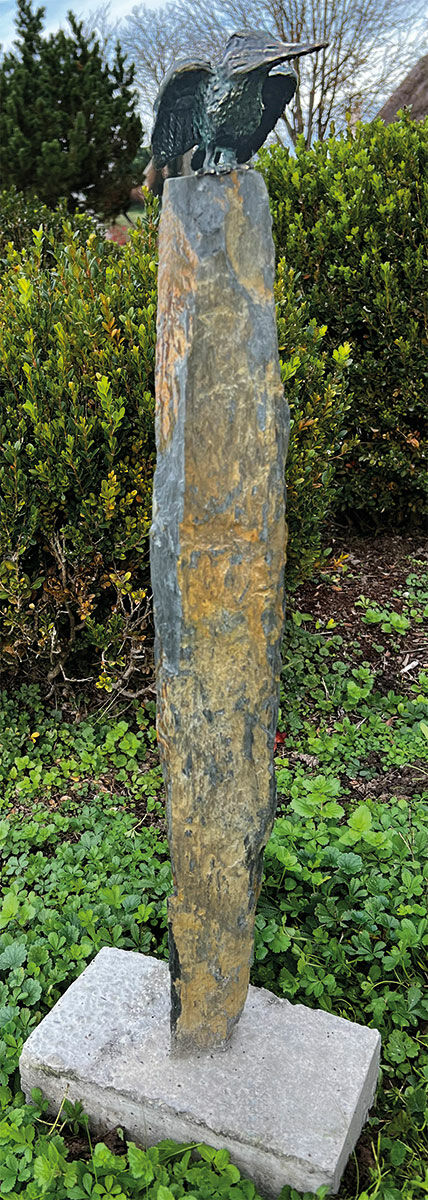Quick info
handmade | bronze | slate | concrete | size total approx. 56-69 x 16 x 25 cm (h/w/d) | weight approx. 10 kg | details may vary
Detailed description
Garden stele "Kingfisher on Column", large version
This bird is also known as the flying jewel due to its colourful feathers. The bronze figure is cast in a detailed manner using the Lost-Wax-Process and is mounted on a slate column. Each slate column is a natural product, therefore, there may be variations in shape and weight. Large version. Size incl. column and concrete base approx. 56-69 x 16 x 25 cm (h/w/d). Weight approx. 10 kg.
This object is part of the following sets
Customer reviews
Alles nach meiner Vorstellung sehr gut abgewickelt und geliefert.
Vielen Dank!
Die Stele ist wirklich schön gearbeitet! Es war das Geburtstagsgeschenk der Mitarbeiter für unseren Chef - er war sehr gerührt und erfreut sich jeden Tag am Anblick.
Die Abwicklung und die Kommunikation mit ars mundi war super! Vielen Dank dafür!
keinerlei Beanstandungen und sehr zuverlässig und schnell geliefert.
An alloy of copper with other metals (especially with tin) used since ancient times.
When casting bronze, the artist usually applies the lost-wax technique which is dating back more than 5000 years. It's the best, but also the most complex method of producing sculptures.
First, the artist forms a model of his sculpture. It is embedded in a liquid silicone rubber mass. Once the material has solidified, the model is cut out. The liquid wax is poured into the negative mould. After cooling down, the wax cast is removed from the mould, provided with sprues and dipped into ceramic mass. The ceramic mass is hardened in a kiln, whereby the wax flows out (lost mould).
Now we finally have the negative form, into which the 1400° C hot molten bronze is poured. After the bronze had cooled down, the ceramic shell is broken off and the sculpture is revealed.
Now the sprues are removed, the surfaces are polished, patinated and numbered by the artist himself or, to his specifications, by a specialist. Thus, each casting becomes an original work.
For lower-quality bronze castings, the sand casting method is often used which, however, does not achieve the results of a more complex lost-wax technique in terms of surface characteristics and quality.
A plastic work of sculptural art made of wood, stone, ivory, bronze or other metals.
While sculptures from wood, ivory or stone are made directly from the block of material, in bronze casting a working model is prepared at first. Usually, it is made of clay or other easily mouldable materials.
The prime time of sculpture after the Greek and Roman antiquity was the Renaissance. Impressionism gave a new impulse to the sculptural arts. Contemporary artists such as Jorg Immendorf, Andora, and Markus Lupertz also enriched sculptures with outstanding works.



